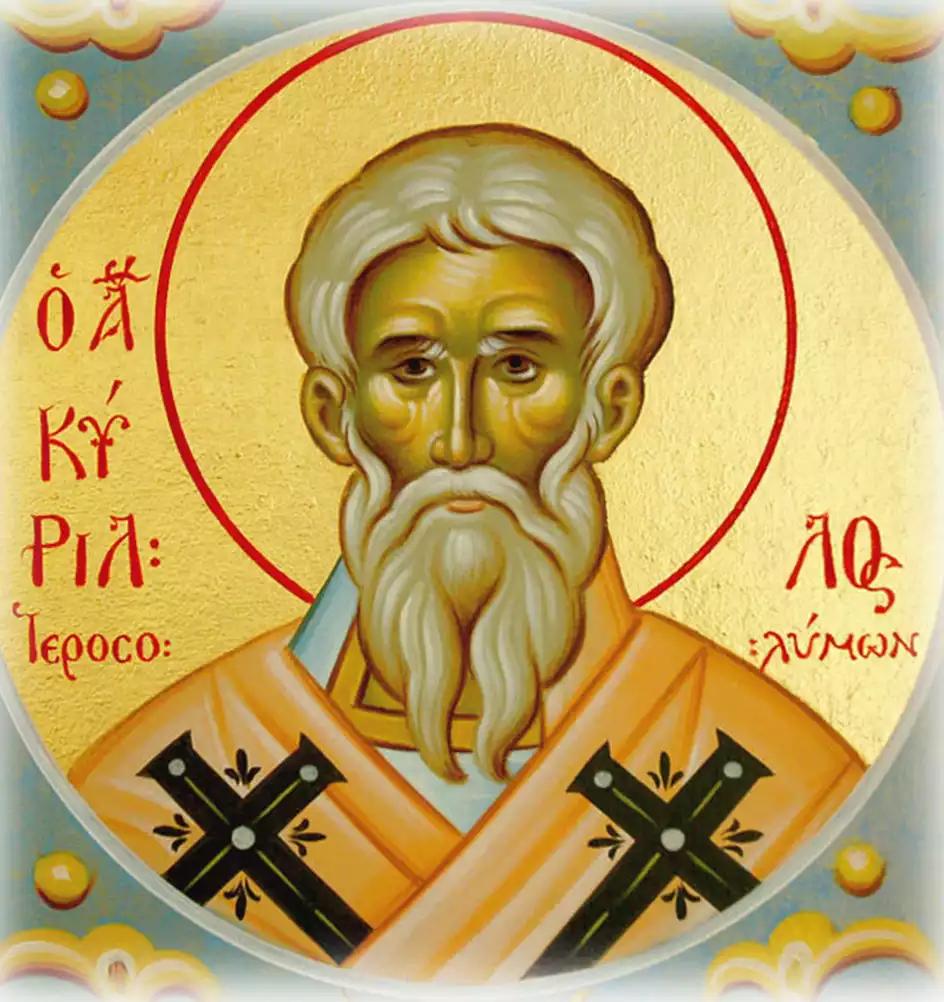
Saint Cyril served as bishop of Jerusalem during a turbulent period in the mid-4th century AD. He faced exile and persecution for his orthodox faith, but continued to pastor his flock. Saint Cyril is best known for his Catechetical Lectures, used to instruct new believers in the fundamentals of Christianity. These lectures offer invaluable insight into early Church worship, doctrine and discipline. Though a controversial figure in his own time, Saint Cyril’s courageous leadership and theological legacy have earned him a place among the great Church Fathers.
Steadfast Shepherd Amidst Strife
Saint Cyril served as Bishop of Jerusalem during the distinctly turbulent mid-4th century AD, ascending to the episcopacy around 349 AD. Though his early years gently overseeing the flock were rather peaceful, Cyril soon faced fierce winds of controversy and oppression that would batter his episcopal see for decades. The rivalry erupted with Acacius, the ambitious Arian Bishop of Caesarea who refused to acknowledge Cyril’s authority and likely perceived the Bishop of Jerusalem as a threat. In 357 AD, Acacius exploited tensions amidst a regional famine to depose Cyril on false charges of selling church property and banish him from Jerusalem – aided by the pro-Arian Roman Emperor Constantius II who held sway over episcopal sees. After two years in exile, Cyril temporarily regained his rightful see in 359, only to endure exile anew beginning in 360 AD courtesy of Acacius and Constantius II. Another decade of embattled exile under Emperor Valens followed until 378 AD, when the Arian ruler finally died. After Valens’ demise, Cyril was able to return permanently under the newly Christian sympathetic Emperor Theodosius I. Despite the fierce winds and turbulent waters that marred much of his episcopacy, Cyril unceasingly ministered to his embattled congregation when extant in the city. His enduring Catechetical Lectures delivered around 350 AD continue to profoundly shape theological understanding by offering invaluable illumination into early Church doctrine, discipline and worship. By steadfastly teaching orthodoxy in the face of external assaults and fears from within, Cyril profoundly shaped the Nicene consensus that ultimately emerged triumphant after centuries of controversy within the Roman Empire and beyond.
Conclusion
Despite enduring repeated exile and persecution, Saint Cyril tenaciously shepherded his flock in Jerusalem while producing seminal theological works still influential today. His Catechetical Lectures offer a profound window into early Church belief and practice. By courageously teaching truth amidst turmoil, Cyril presaged Christianity’s ultimate triumph over heresy and laid foundations for the Nicene consensus that still endures. Such stalwart leadership cemented his legacy as one of the great Fathers of the early Church.
References
McGuckin, J. A. (1995). St. Cyril of Jerusalem: The Early Church Fathers. Routledge.
Wickham, L. R. (1983). Cyril of Jerusalem and Nemesius of Emesa. Westminster John Knox Press.
Telfer, W. (1955). Cyril of Jerusalem and Nemesius of Emesa on the Eucharist. The Westminster Press.
Quasten, J. (1960). Patrology, Vol. 3: The Golden Age of Greek Patristic Literature. Christian Classics.
Kelly, J. N. D. (1995). Golden Mouth: The Story of John Chrysostom. Cornell University Press.
Leemans, J. et al. (2003). Cyril of Jerusalem. Brill Publishers.
